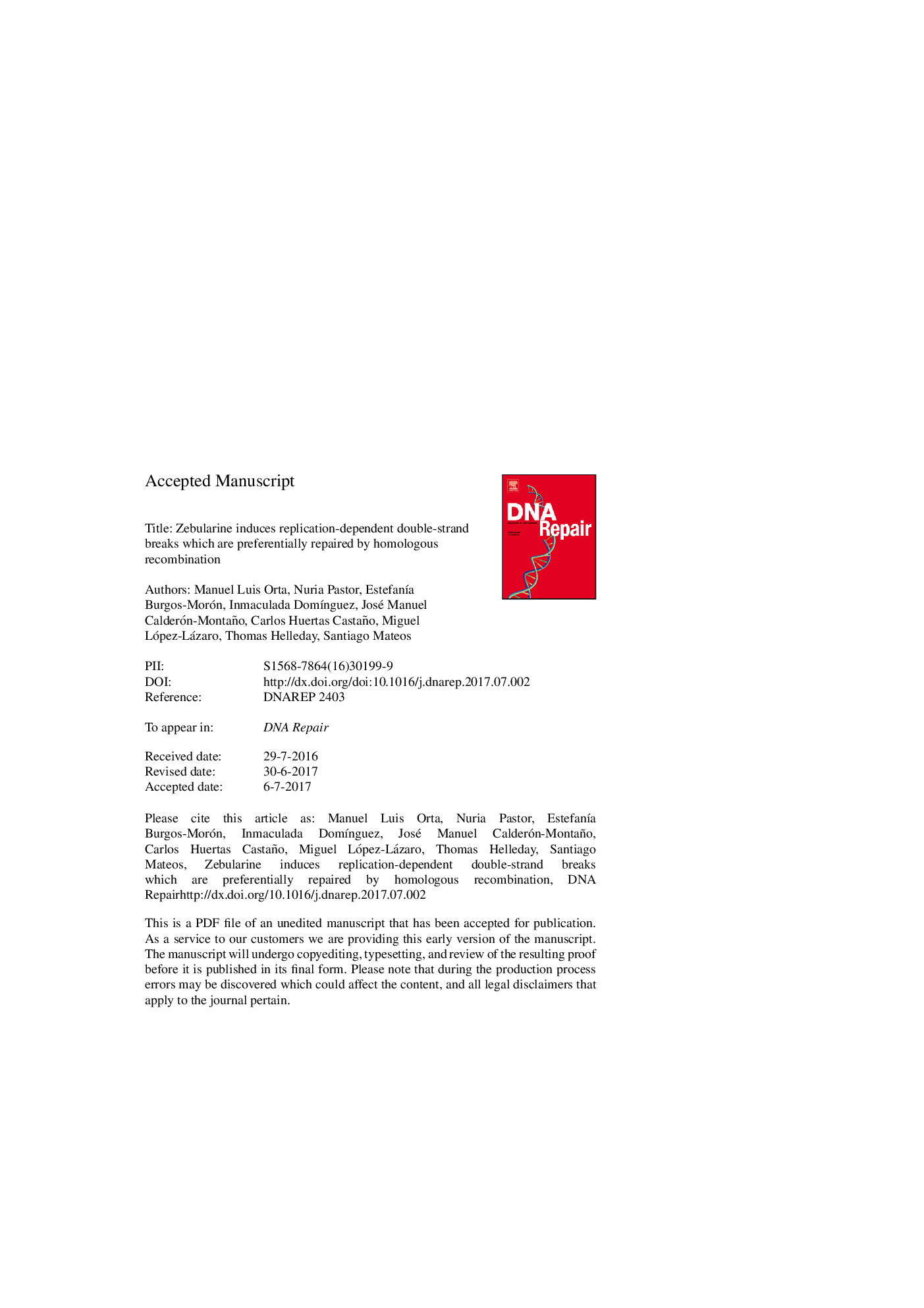| کد مقاله | کد نشریه | سال انتشار | مقاله انگلیسی | نسخه تمام متن |
|---|---|---|---|---|
| 5510932 | 1539371 | 2017 | 22 صفحه PDF | دانلود رایگان |
عنوان انگلیسی مقاله ISI
Zebularine induces replication-dependent double-strand breaks which are preferentially repaired by homologous recombination
دانلود مقاله + سفارش ترجمه
دانلود مقاله ISI انگلیسی
رایگان برای ایرانیان
کلمات کلیدی
موضوعات مرتبط
علوم زیستی و بیوفناوری
بیوشیمی، ژنتیک و زیست شناسی مولکولی
زیست شیمی
پیش نمایش صفحه اول مقاله

چکیده انگلیسی
Zebularine is a second-generation, highly stable hydrophilic inhibitor of DNA methylation with oral bioavailability that preferentially target cancer cells. It acts primarily as a trap for DNA methyl transferases (DNMTs) protein by forming covalent complexes between DNMT protein and zebularine-substrate DNA. It's well documented that replication-blocking DNA lesions can cause replication fork collapse and thereby to the formation of DNA double-strand breaks (DSB). DSB are dangerous lesions that can lead to potentially oncogenic genomic rearrangements or cell death. The two major pathways for repair of DSB are non-homologous end joining (NHEJ) and homologous recombination (HR). Recently, multiple functions for the HR machinery have been identified at arrested forks. Here we investigate in more detail the importance of the lesions induced by zebularine in terms of DNA damage and cytotoxicity as well as the role of HR in the repair of these lesions. When we examined the contribution of NHEJ and HR in the repair of DSB induced by zebularine we found that these breaks were preferentially repaired by HR. Also we show that the production of DSB is dependent on active replication. To test this, we determined chromosome damage by zebularine while transiently inhibiting DNA synthesis. Here we report that cells deficient in single-strand break (SSB) repair are hypersensitive to zebularine. We have observed more DSB induced by zebularine in XRCC1 deficient cells, likely to be the result of conversion of SSB into toxic DSB when encountered by a replication fork. Furthermore we demonstrate that HR is required for the repair of these breaks. Overall, our data suggest that zebularine induces replication-dependent DSB which are preferentially repaired by HR.
ناشر
Database: Elsevier - ScienceDirect (ساینس دایرکت)
Journal: DNA Repair - Volume 57, September 2017, Pages 116-124
Journal: DNA Repair - Volume 57, September 2017, Pages 116-124
نویسندگان
Manuel Luis Orta, Nuria Pastor, EstefanÃa Burgos-Morón, Inmaculada DomÃnguez, José Manuel Calderón-Montaño, Carlos Huertas Castaño, Miguel López-Lázaro, Thomas Helleday, Santiago Mateos,